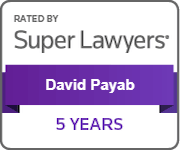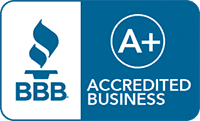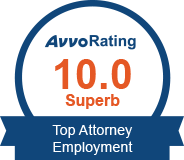Creating inclusive and supportive workplaces is essential for both employees and employers. Yet, misconceptions about disabled employees persist, holding back progress and fostering unnecessary barriers. Addressing these myths not only benefits employees with disabilities but also creates more robust, innovative, and equitable workplaces.
Below, we’ll uncover some of the most common misconceptions about disabled employees and provide actionable steps to combat them.
Myth 1: Disabled employees are less productive
One of the most pervasive myths is that disabled employees lack the productivity of their non-disabled counterparts. This assumption couldn't be further from the truth.
The reality
Research has consistently shown that employees with disabilities are just as productive and reliable as their peers. Many bring unique perspectives, problem-solving skills, and commitment that significantly enrich workplace culture and output.
How to fight this myth
- Educate managers and teams about studies and statistics showing the performance equality of disabled employees.
- Highlight the achievements of disabled employees within your organization.
Myth 2: Hiring disabled employees is too expensive
Some employers worry that hiring disabled employees will lead to significant costs for workplace accommodations. This inaccurate belief can often deter them from creating inclusive hiring practices.
The reality
According to the Job Accommodation Network (JAN), most workplace accommodations cost less than $500, and many cost nothing at all. Tax incentives are also available to help offset these expenses.
How to fight this myth
- Promote the availability of government resources, tax credits, and state assistance programs for businesses hiring disabled workers.
- Share real-life success stories of cost-efficient accommodations to challenge these misconceptions directly.
Myth 3: Disabled employees are more likely to take time off
A frequent concern among employers is that disabled employees will need excessive time off, leading to disruptions or lost productivity.
The reality
Studies show that disabled employees take no more time off than non-disabled employees and often demonstrate greater resilience. Many develop strong time management and adaptive skills to succeed in the workplace.
How to fight this myth
- Focus on results-oriented productivity rather than stigmatizing flexibility or occasional absences.
- Foster open communication to ensure employees feel supported rather than judged.
Myth 4: Workplace diversity is only a moral choice, not a business advantage
While many organizations may tout workplace diversity as “the right thing to do,” there’s a misconception that inclusive hiring doesn’t impact business success.
The reality
A diverse workforce, including disabled employees, fosters greater creativity, innovation, and collaboration. Many companies with inclusive hiring practices see increased financial performance and engagement among team members.
How to fight this myth
- Share data on organizations that have benefited from fostering workplace diversity, like improvements in innovation and profitability.
- Build a business narrative around how an inclusive culture strengthens the company’s goals and market presence.
Actionable Steps Toward Creating an Inclusive Workplace
Overcoming myths about disabled employees isn’t just about recognizing the truth but also fostering an organizational culture that actively combats stereotypes and barriers.
1. Offer disability inclusion training
Provide regular training for managers and employees to promote understanding and reduce stigma. Education can help dispel myths while fostering empathy.
2. Celebrate disability awareness and achievements
Take part in events like National Disability Employment Awareness Month to show your commitment to inclusion and celebrate the contributions of all employees.
3. Proactively implement accessibility
Evaluate where your workplace can improve, from physical accessibility to flexible work arrangements. Building an inclusive environment proactively can eliminate potential concerns before they arise.
4. Create employee resource groups (ERGs)
Establishing ERGs for disabled employees provides a safe space for collaboration, networking, and addressing challenges within the workplace.
5. Encourage open communication
Show your commitment to inclusivity by listening to employee feedback and creating a culture where all team members feel heard and valued.
Promoting Inclusive Workplaces in California
If you’re a disabled employee in California trying to cultivate a welcoming workplace, know that there’s support available to guide you. California’s legal framework protects against discrimination and requires reasonable accommodations for employees with disabilities.
If you feel you’re being discriminated against or want guidance on implementing accessibility practices in your workplace, consult a trusted professional or workplace advocate.
Woodland Hills Disability Discrimination Attorney Ready to Help
Breaking down misconceptions about disabled employees requires both knowledge and action. By addressing harmful myths, fostering understanding, and committing to inclusive practices, businesses can create workplaces that empower all employees to thrive.
At The Law Office of Payab & Associates, we represent California workers who have been mistreated because of their disability. Those who seek legal action can come to us, while we advocate and fight for their rights in the workplace.
Do you think you need help from a disability discrimination employee? Let us help.
Contact us at (818) 918-5522 today and request a consultation.

































